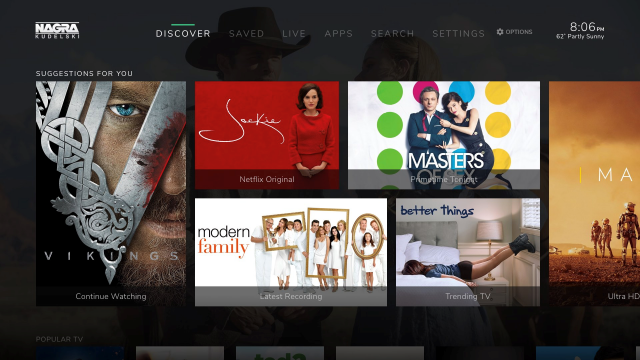
By Anthony Smith-Chaigneau, Senior Director Product Marketing, NAGRA
In a pay-TV world with innovation on the brain and revenue-sapping disruption coming from all angles, the operators’ collective mindset is always focused on what the next ‘big thing’ is going to be, and where it will come from.
To find an answer to that disruption, we first have to take a brief look back.
2017 was the year of the Voice User Interface (VUI). However, while the best known solutions – Alexa and Siri – had little direct connection to the TV user experience at the time, this is now changing and we should anticipate the growing popularity and normalisation of interacting with VUIs in the home and can expect them to have an impact on the TV user experience in the coming years.
And the timing, arguably, couldn't be better for a new technology to emerge and define the new trend of TV UX design. Until recently, there has been an ongoing, though low intensity, tussle between the three conventional approaches to the user experience: the menu, the app and the EPG. Of course, none of these user experiences are perfect – they can’t satisfy everybody’s preferences in a completely frictionless way.
But as we've already started to see in areas such as the smart home, the VUI has the potential to become the technology to soothe these consumer pain points. Why use the cumbersome keyboard function when you could just speak into your remote control? Or even forget the remote completely and talk to your TV directly? In the short to medium term at least, we should expect the VUI to impact the streamlining of an increasingly fragmented pay-TV user experience.
But, taking a longer-term perspective viewpoint, the pay-TV UX conversation will invariably gravitate towards two big buzzwords: AI and VR.
Gartner’s Hype Cycle listed VR as one of the trends to be "of the highest priority" in the next few years. And according to CCS Insight, consumers will be buying 97 million VR headsets by 2020. What does this mean? Unlike other innovations that have failed to gain traction in the TV industry, the VR hype is growing and it’s here to stay.
VR and AR technologies are bound to play a role in shaping the future of the pay-TV user experience, even if we may be some way off realising VR's full potential on a TV screen. But, when it comes to AI and machine learning, the outlook is less clear. It's hard to say exactly when or how AI will make a definitive impact on the pay-TV user experience.
Beyond the assumption that algorithms will become more advanced and recommendations will become more attuned to the user's habits and preferences, the future of pay-TV and AI remains up for debate.
What we can say, however, is that simply mining data won't be the long-term solution. Data-driven AI might help operators better understand consumer behaviour and interests to a point, but it won't replace the human ability to design imaginative new user journeys or ease those pain points. Instead, the UX of the future will still be designed by humans for humans, but supported by AI. It will be this combination of the two to offer personalised services based on insightful data that will ultimately make the difference.
As the pay-TV industry turns its head towards innovation, expect exciting times ahead for the user experience.
As for the question of what the UX of the future will look like, the best advice we can offer is to consider the question in other ways. Don't just think about what it will look like, think about what it might sound or feel like, and how it will interact with you too.
